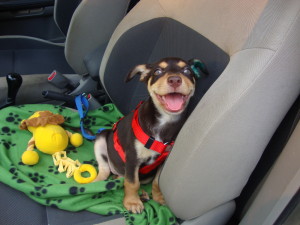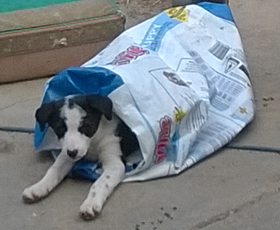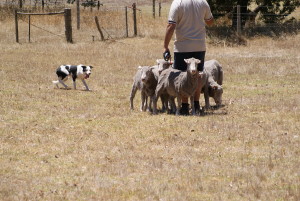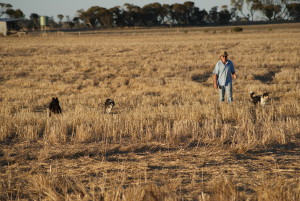The following hints on training were the work of long time Member and Patron of our Association, the late Reg Michael of Barunga Gap; they contain much common sense which will, when applied, result in a better sheepdog.
- Too often we see young dogs denied their true potential by incompetent or inexperienced handling. A little patience and encouragement at this stage can be well rewarded.
 A new owner, when choosing a young dog from a breed of his or her choice, would be well advised to seek advice from a reputable breeder. A new owner, when choosing a young dog from a breed of his or her choice, would be well advised to seek advice from a reputable breeder.- It matters little whether it be kelpie, collie or coolie, a well trained dog is the desired result. Choosing from a proven, good producing matron will reduce the risk of failure. Colour or markings don’t necessarily help their performance.
- There are strains within breeds with varying characteristics: some are natural yard type workers, with a tendency for backing and barking- a bonus when controlled: while others work wider naturally and have more eye and control.
- It is important that a friendly bond be developed between the handler and the young dog. When this relationship is achieved general training and discipline will be more readily accepted. Usually the person providing the exercise will win the friendship regardless of who does the feeding.

- When taking the pup for a walk or exercise on a leash, a small piece of branch from a tree with the leaves attached or a bamboo will soon teach the pup to walk at heel or behind.
- A five or six metre length of sash cord or light material with the aid of a light stick, can be used to teach the pup to stop or sit. Short lessons of only a few minutes will prevent the dog from becoming sour and resentful. Always use a command during lessons; a choker collar sometimes will help.
- From three to nine months of age a sheepdog should start to show interest. A well bred dog will develop naturally a desire to bring the sheep to the handler.
 A few quiet sheep in a yard or small paddock is one quick way to start a pup working. A short lesson as often as possible for a few weeks is time well spent. A few quiet sheep in a yard or small paddock is one quick way to start a pup working. A short lesson as often as possible for a few weeks is time well spent.- It is useless trying to teach a young dog to work sheep before sufficient interest has developed. The company of another dog, a barker for preference, will often encourage a young dog to take part.
- When the art of casting (always from behind the handler) on quiet sheep has been achieved, care should be taken on longer casts. Because of the excitement or lack of confidence a youn
 g dog will sometimes do a full circle of the mob, or perhaps cut some off. g dog will sometimes do a full circle of the mob, or perhaps cut some off.
- Long periods of hard work should be avoided as a young tired dog can develop undesirable habits. Some habits are easily developed but difficult to cure.
- A young dog well cared for and well trained will develop into an invaluable workmate, ready to work at all times and a faithful friend.
|